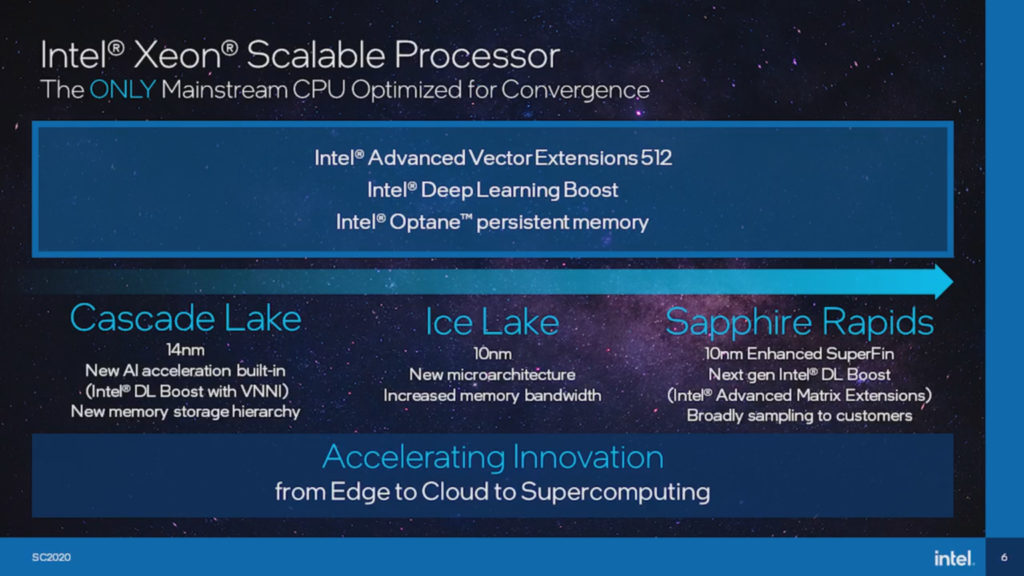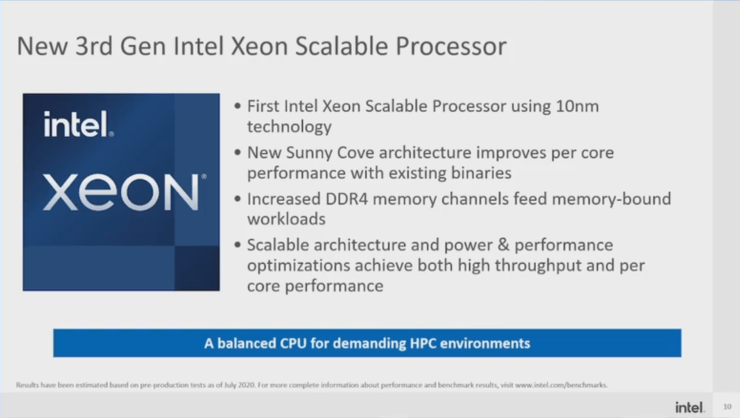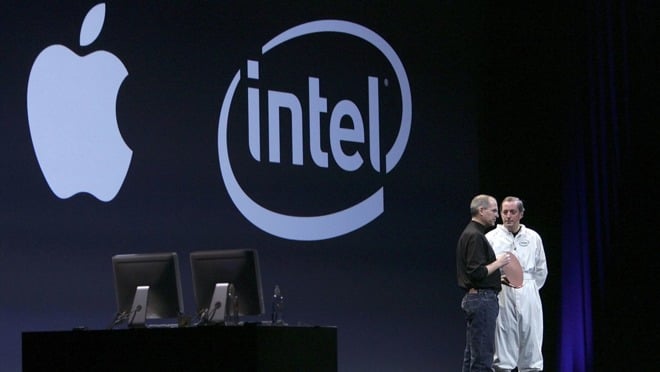Intel has new performance numbers for their next-generation Ice Lake-SP Xeon Platinum Scalable CPUs, and they are compared head-to-head against AMD EPYC (2nd Generation) CPUs in these tests. And, Intel is provably competitive in these scenarios, but with a catch.
These new Xeon Scalable Processors will be running the Sunny Cove architecture and will be manufactured utilising Intel’s 10 nm process node, according to Intel from their SC20 Event. Scheduled to be released for clients by mid-2021, these CPUs may boast over 18% IPC uplifts over older, Skylake-SP Xeon CPUs, as well as newer technologies such as PCIe 4.0, more memory channels and support for up to 6 TB of memory support per CPU socket.

Intel Ice Lake-SP Xeon Beats AMDs 64-core EPYC 7742
in AVX-512 workloads
In several tests consisting of benchmarking from workloads related to scientific research and the Financial Service Industry (FSI), a 32-core Ice Lake-SP Xeon CPU beat AMD’s highest-end EPYC CPU, the 64-core 7742. The differences seen were claimed “1.2-1.3 times” favouring Intel’s upcoming CPU in an otherwise equal benchmark. However, the reason for this surprising difference is quite clear if we look at these benchmarks and how they work. These workloads gain greatly from the implementation of AVX-512 (Advanced Vector Extensions-512) on Intel chips.
Since AVX-512 requires additional hardware on the CPU die to be implemented, it is only present in the highest-end server-grade hardware that is purpose-built for complex workloads like the ones Intel demonstrated. Additionally, this hardware can take up valuable space that may have otherwise gone to other necessary features on the CPU, something that AMD has elected to be more valuable on their EPYC systems. These workloads still will work without AVX-512, albeit slower, as the tests show.
Ice Lake-SP: The Optics For Intel

WCCFTech believes that this comparison by Intel shows us how far behind Intel has actually gone in this High-Performance Computing (HPC) CPU race. Intel’s benchmark CPU still had half the cores of AMD’s CPU, which was released back in 2019, and Intel had to turn on AVX-512 to make it a winning fight for them. In terms of efficiency and overall performance, it is Intel’s battle to lose.
Though it has to be noted that the new CPUs come with a new platform named Whitley, which is a notable jump ahead for Intel’s HPC division. With this platform in place, Intel has room to innovate and develop on it to introduce more competitive parts that may help them in the long run.

Xeon still commands more market share than EPYC does at the moment, but enterprise applications work very differently when compared to normal consumer market spaces. What this means is that EPYC still has some way to go to be as popular as Xeon, but they do seem to have it easy with the upcoming Xeon CPUs. Additionally, EPYC’s third generation of CPUs is scheduled to be released quite soon. Those will be running AMD’s Zen 3 architecture, a significant step forward for AMD, as witnessed with their Ryzen 5000 launch too.
